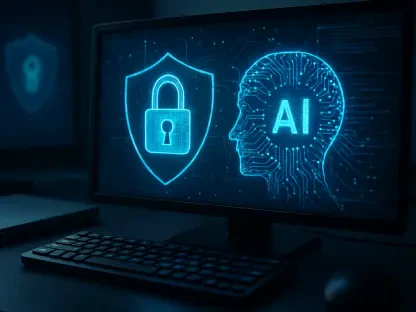Amid the constantly evolving landscape of technology, a persistent threat reshaping strategies across higher education surfaces: ransomware. This sinister menace, which locks users out of their own systems until a ransom is paid, has metamorphosed from a niche concern into a looming specter over universities worldwide. Fueled by recent incidents, educational institutions are scrambling to reinforce their defenses.
Ransomware Technology in Higher Education
Until recently, ransomware threats were largely attributed to isolated incidents, but their ubiquitous presence has grown at an alarming rate. Institutions, which possess vast and interconnected digital ecosystems, present ideal targets due to their complex structure and valuable data. From classrooms to research centers, every node can serve as a potential entry point for these cyber intrusions, disrupting academic and administrative workflows. Pioneered by increasingly sophisticated cybercriminals, ransomware adapts to exploit these vulnerabilities, demanding robust defense strategies.
Addressing this issue requires a deep dive into the operational dynamics of ransomware. At its core lies the ability to infiltrate and encrypt data systems, rendering them unusable until a ransom is paid. Educational institutions, with their decentralized networks and disparate access points, find themselves at heightened risk. This reality has prompted a significant shift in cybersecurity protocols, compelling universities to rethink their digital defense mechanisms.
Mitigating the Threat: Technological Solutions and Strategies
Central to any ransomware defense is the implementation of cutting-edge software designed for both detection and prevention. Anti-ransomware solutions now incorporate advanced algorithms capable of identifying unusual patterns and thwarting attacks before they infiltrate. Performance metrics for these solutions often hinge on their ability to rapidly detect threats while minimizing false positives, offering a balance between security and usability.
Another pillar of ransomware mitigation is maintaining a stringent data backup and recovery plan. Secure, regular backups ensure institutions can restore data without yielding to ransom demands. Effective recovery protocols involve detailed plans that minimize downtime and data loss, ensuring continuity of operations even in the aftermath of an attack. This strategic layer has become increasingly critical, underscoring the need for relentless backup vigilance in the fight against ransomware.
Network security and segmentation also play a critical role in any protective strategy. By dividing institutional networks into isolated segments, universities can contain and quarantine potential ransomware threats. Implementing strong authentication methods and monitoring traffic enables real-time threat detection, proving essential in creating a fortified defense perimeter.
Recent Developments and Behavioral Changes in Ransomware
The ransomware battlefront remains dynamic, marked by technological advancements and shifts in cybercriminal behavior. Recent innovations have surfaced, focusing on automation and enhanced predictive analytics. These advancements allow cybersecurity teams to move from reactive to proactive postures, facilitating the anticipation of potential threats.
The evolution of ransomware tactics also necessitates an adaptable defense strategy. Criminals now employ more sophisticated evasion techniques, cunningly blending traditional attack methods with emerging technologies such as Artificial Intelligence (AI). To counter this, cybersecurity measures must evolve, leveraging machine learning and AI tools to stay ahead of these cunning adversaries.
Real-world Applications and Sectoral Impacts
Higher education has emerged as a focal point in the ransomware discourse, with numerous institutions spearheading robust cybersecurity measures. Universities with notable implementations have set benchmarks, showcasing the efficacy of comprehensive mitigation strategies. Their success stories highlight sector-specific needs, emphasizing bespoke solutions aligning with an institution’s unique operational dynamics.
Examining these industry leaders reveals how tailored approaches have fortified defenses against ransomware. These implementations demonstrate the value of proactive measures, leveraging technology to safeguard sensitive data amid an evolving threat landscape. This focus attracts cross-industry interest, signaling possibilities beyond the academic realm.
Addressing Challenges in Ransomware Defense
Nonetheless, mitigating ransomware presents considerable challenges. Budgetary constraints, especially in smaller institutions, impede the deployment of comprehensive security solutions. Regulatory pressures and compliance issues compound these difficulties, placing additional demands on already stretched resources. As institutions navigate this complex landscape, they confront obstacles requiring innovative solutions and collaborative efforts to overcome.
In addressing these challenges, universities increasingly engage with wider communities to share knowledge and resources. Collaborative endeavors, whether through research grants or technological partnerships, have expanded the horizon for possible solutions to these pressing issues. This cooperative dimension reinforces the need for collective action, positioning it as a cornerstone in combating ransomware threats.
Progress and Prospects for Ransomware Defense
Given the rapidly changing threat environment, future developments in ransomware defense are poised to impact how educational institutions structure their security frameworks. Innovations focusing on integrating AI and blockchain technology hold the promise of more resilient and adaptive defenses. Looking ahead, systemic shifts may alter the threat landscape itself, reshaping institutional and sector-wide cybersecurity strategies.
As the digital tapestry changes, potential breakthroughs in ransomware mitigation carry the weight of transforming educational environments. Strategies that, five years ago, were considered comprehensive now require regular reassessment and adaptation to align with an ever-shifting threat spectrum. The continual refinement of defenses heralds significant implications for future strategies.
Advancing Educational Safety
In summary, mitigating ransomware in higher education involves sophisticated software, stringent data protocols, and strategic network segmentation. Despite challenges, universities implementing innovative defense measures demonstrate significant progress in protecting their digital infrastructure. Recognizing the current accomplishments in ransomware defense is crucial for those institutions striving for safety in an increasingly digital world. This emerging wave of advancements offers a potential lifeline, ensuring institutions can stay ahead of daunting cybersecurity threats.









